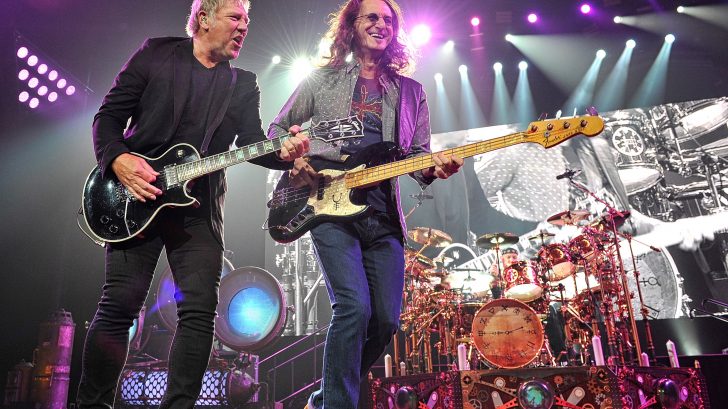Rush have left the stage after a musical career of more than forty-five years in which they have been one of the kings of hard rock and progressive. Like almost all long-distance bands, the sound created by Geddy Lee, Alex Lifeson, and Neil Peart has been mutating at different times, coming to walk through the AOR, pop-rock, and even the new wave. They have authored a series of albums that today are considered true masterpieces. We look back at those albums the best and worst from Rush’s career:
Worst: Snakes & Arrows (2007)
Five years after the irregular Vapor Trails this album appeared on the scene. Snake & Arrows has the virtue of being the typical work of a consolidated band that no longer intends to surprise right off the bat but to demonstrate their love for music and their experience at the service of compositions that generally do not waiver at any time. Canadians have always been avant-garde in their sound, they have always shown a great capacity to evolve, and here they do not miss the opportunity. The sonority is current, the distorted guitars are cutting when they should be and the rhythmic base is what Rush wants at all times, neither more nor less. Gold record in Canada.
‘Snakes & Arrows’is capable of dividing the fans from the Canadians to the point of qualifying it as a jewel for its discography or a mediocre one for its trajectory. Those of us who have always moved regardless of what the Rush trio did, since it has never been on my pedestal, nor do we get excited or feel disappointed. For me Rush had a clear division: the group of the ’70s -rockero, pungent and very special and original, they sounded only to them- and the one of the ’80 and early ’90 -soporific, commercial and pop music until exhaustion. -. After ‘Vapor Trails’ I was doubtful and nothing expected five years later. Now I listen to this ‘Snakes & Arrows’ with as much objectivity as little enthusiasm. And I take it in esteem, but not enough.
Best: Moving Pictures (1981)
If at some point they looked for a good balance between the elaborate and the accessible, with Moving Pictures they nailed it. The compositions are drastically reduced in terms of minute length and there is no composition close to twenty minutes like the ones they once composed. It is neither better nor worse, they simply used all their talent and good taste for melody to go even further and be heard by those who still remained far from Rush’s radar. An unbeatable album for classics like “Tom Sawyer”, “Red Barchetta”, the instrumental “YYZ” or the great “Limelight”. They achieved four platinum records in Canada and the United States, and worldwide recognition.
Rush, the best-known Canadian band in the world, created this Moving Pictures in 1981. It is the eighth LP of their prolific career characterized by their changing style, from the hard rock of their beginnings, progressive rock predominant in the present long duration, alternative rock in the 90s, and again hard rock in the 21st century.
Moving Pictures is 40:04 long, Rush’s best-selling album, containing only seven tracks, although all of them are of high quality. Let us remember that they were recorded by three musicians recognized for their mastery in the execution of their respective musical instruments.

